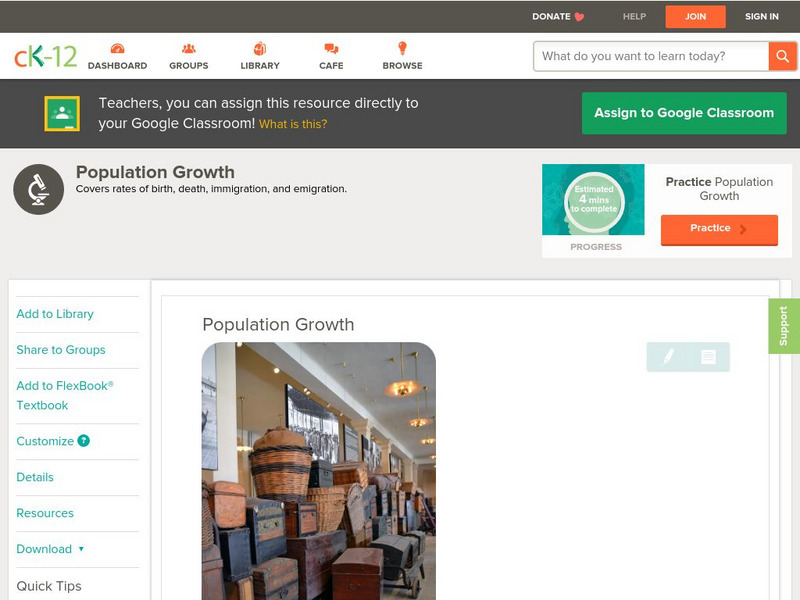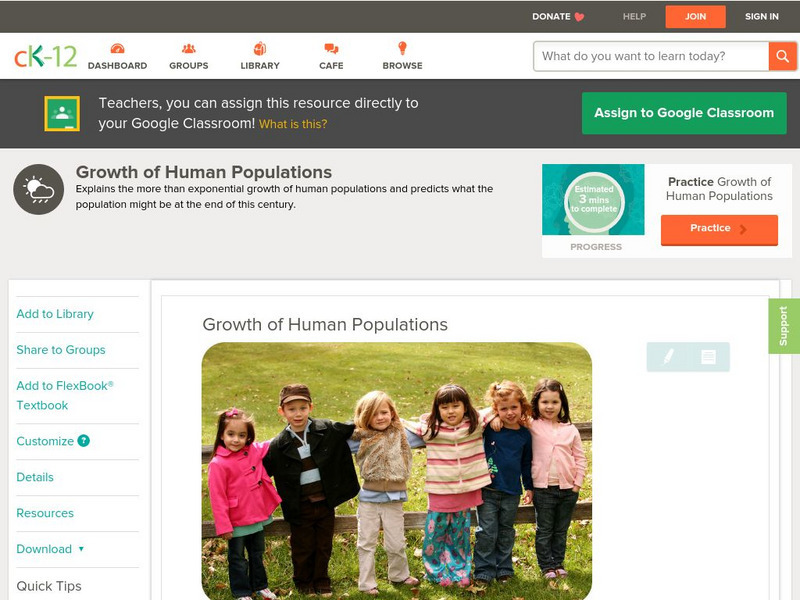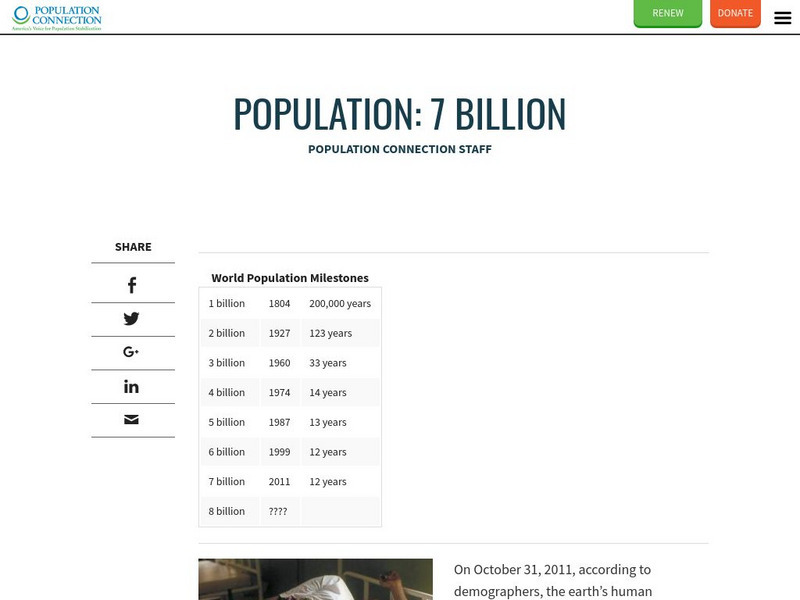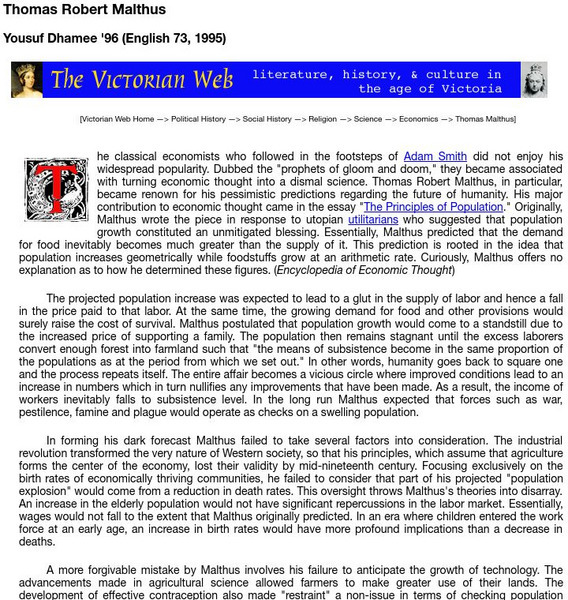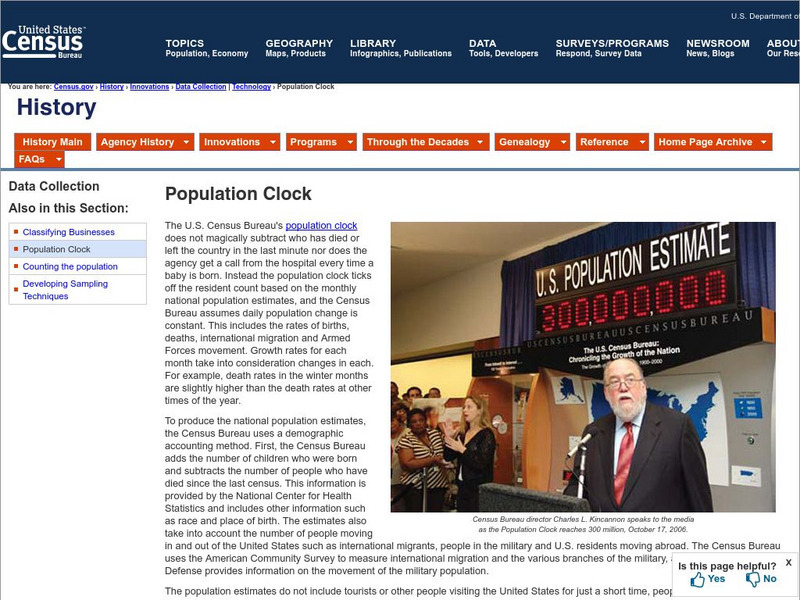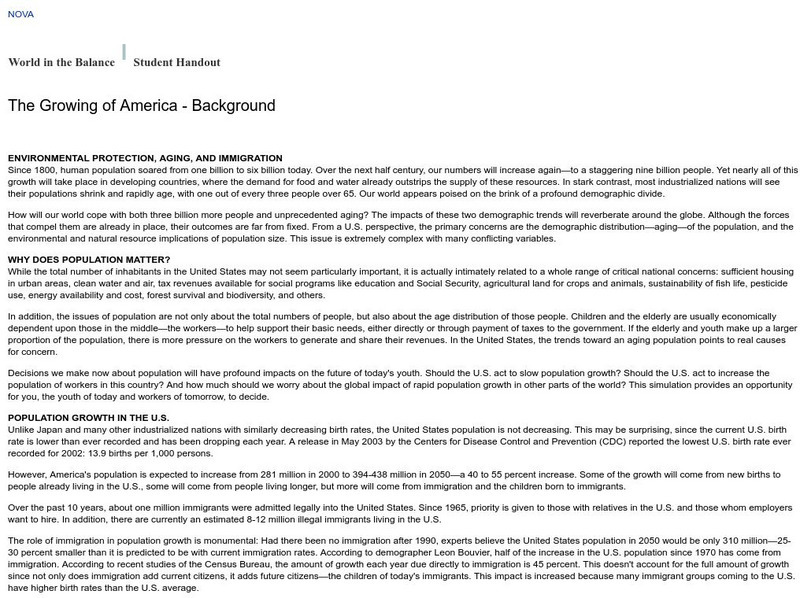Scholastic
Scholastic: Learning the Causes of Extinction
There are five major causes of extinction: habitat loss, an introduced species, pollution, population growth, and overconsumption. Through this activity, students will create a list of reasons why animals can become extinct.
CK-12 Foundation
Ck 12: Biology: Population Growth
[Free Registration/Login may be required to access all resource tools.] Describes how rates of birth, death, immigration, and emigration affect population growth.
CK-12 Foundation
Ck 12: Life Science: Human Population
[Free Registration/Login may be required to access all resource tools.] How quickly is the human population growing? If we look at worldwide human population growth from 10,000 BCE through to today, our growth looks like exponential...
CK-12 Foundation
Ck 12: Earth Science: Growth of Human Populations
[Free Registration/Login may be required to access all resource tools.] Describes how the human population is rapidly expanding.
Population Connection
Population Connection: 7 Billion
This fact sheet from the non-profit organization Population Connection addresses the problem of overpopulation as the Earth approaches 7 billion residents. Includes statistics and details the reasons why many experts are concerned about...
CK-12 Foundation
Ck 12: Biology: Population Growth Patterns
[Free Registration/Login may be required to access all resource tools.] Covers different patterns of population growth.
CK-12 Foundation
Ck 12: Earth Science: Future Human Population Growth
[Free Registration/Login may be required to access all resource tools.] Describes future population growth.
CK-12 Foundation
Ck 12: Biology: Demographic Transition
[Free Registration/Login may be required to access all resource tools.] Discusses the four stages of demographic transition.
Khan Academy
Khan Academy: Activity: This Threshold Today
Use the Internet to search for news stories about the Modern Revolution and discuss the provided questions. Helpful links are provided to get you started.
Khan Academy
Khan Academy: Claim Testers: Episode 3 Planting Seeds
The claim-testing gang find themselves in a bind and conduct their own experiment to show how agriculture leads to more complex societies.
Khan Academy
Khan Academy: Us History: 1945 1980: The Baby Boom
Find out why there were so many babies born in the United States after World War II.
Khan Academy
Khan Academy: Malthusian Population Growth and Population Pyramids
Read this passage and study the graphics to answer the five-question quiz that follows.
PBS
Pbs Learning Media: Westward Expansion, 1790 1850
This interactive map explores the territorial and population changes in the United States between 1790 and 1850. It also covers the beginning of the transportation revolution and the Native American land cessions and forced removals.
CK-12 Foundation
Ck 12: Biology: Population Study Guide
Learn about the components of a wildlife population, and see the effects of growth.
Khan Academy
Khan Academy: Life Tables, Survivorship, & Age Sex Structure
This article describes tools ecologists use to describe the present state of a population and predict its future growth.
Victorian Web
The Victorian Web: Thomas Malthus
The Victorian Web provides a brief biography of the Victorian economist Thomas Robert Malthus, focusing on his views on population growth. Links are provided throughout the article for additional information.
Other
The Geography Site
The Geography Site offers many links for your geography research. Links offered are to physical geography, human geography, environment, online lessons, and much more.
US Census Bureau
U.s. Census Bureau: Population Clocks
This U.S. Census Bureau Web site has two population clocks with notes available. One clock shows the population increase for the United States. The other shows the world population increase.
PBS
Pbs Teachers:world in the Balance: The Growing of America
Explore the links among population growth, immigration, environment and support of the elderly in America. Conduct a role play and explore the options available to tackle problems caused by deomgraphic trends.



